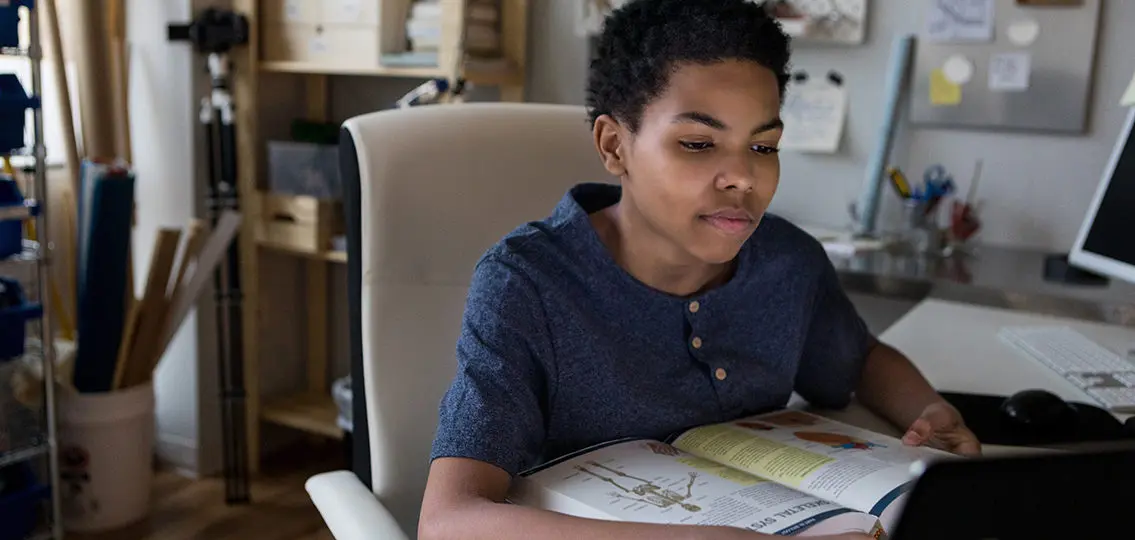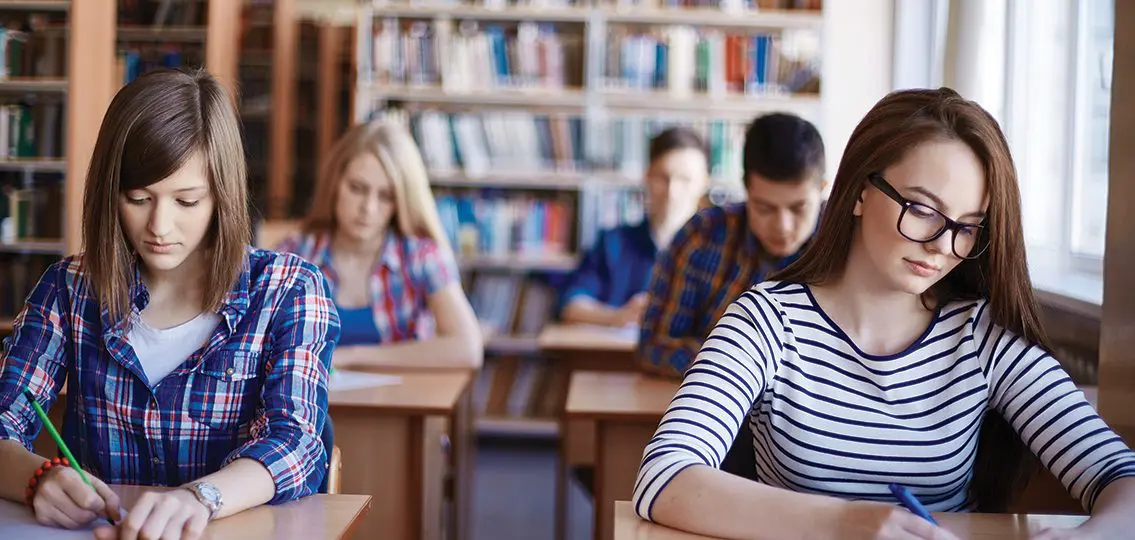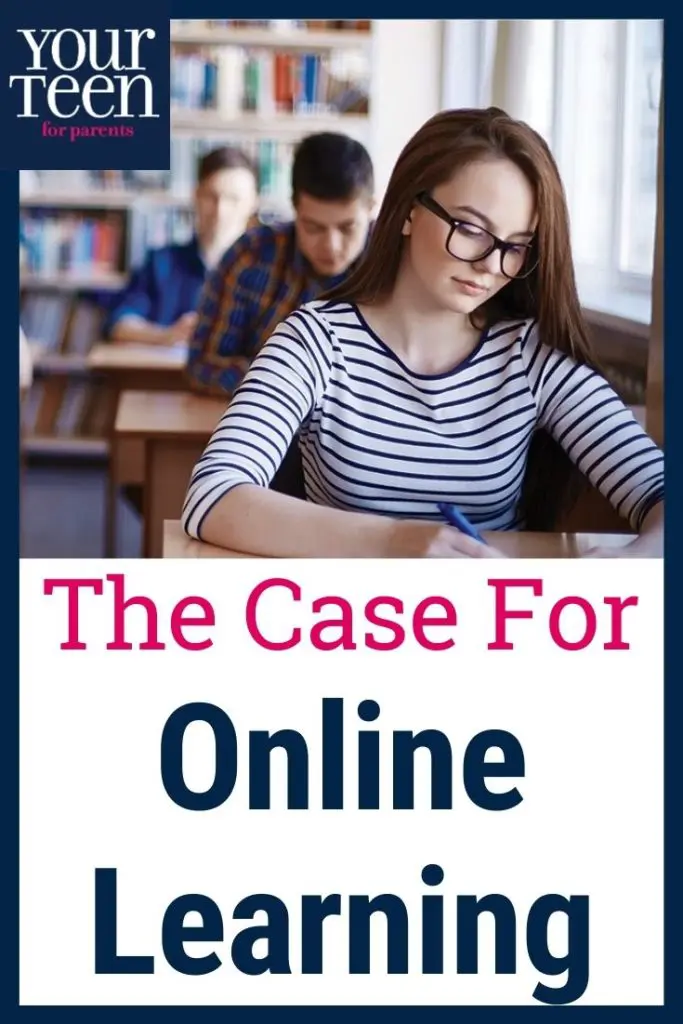COVID-19 is indeed our enemy.
And if you want to defeat the enemy, then you must think like the enemy.

How COVID-19 “Thinks”
1. Our enemy likes us close to each other.
Picture a school classroom: a well-lit, happy rectangle with about thirty desks and chairs in it. Such a room is the IDEAL environment for spreading COVID- 19. Typically, students in a classroom are much closer than six feet apart. If you reduce the number of students in a room such that they are six feet apart, you might limit your room to just five students – one in each corner and one in the middle. Such a configuration would likely make it impossible to conduct classes at a school with a high population of students, and would make it incredibly inefficient.
2. It likes us talking (and sneezing and coughing, if possible).
Imagine the utterly normal young people entering our classroom – boisterous, chatting, socially interacting, precisely as they should be doing. Is it REALLY going to be possible to keep them all quiet? Besides, one of the best ways to learn new information is to talk about it, so would we WANT to keep them quiet? Answer – no, not about their learning, definitely not. Well guess what? COVID LOVES all that talking. And how are we going to keep them quiet and not interacting at lunch? In the hallway? In the locker room? On the bus? At the bus stop?
3. It likes us indoors.
This is another attribute of COVID that makes schools the IDEAL vehicle for it.
What about ventilation as a cure, some might say. Would opening windows really make all the COVID droplets go outside? What would propel them that way? And if you open the door to create a cross-ventilation, who are the unlucky ones who sit in the middle of that flow? How about mechanical ventilation systems, costing maybe hundreds of thousands of dollars per building, maybe even more? Most K – 12 school districts and most colleges don’t have all that extra money just lying around for new ventilating systems in all school buildings in case a pandemic shows up.
4. It likes us together for many hours, if possible.
Think of the typical school day schedule: our child gets on the crowded school bus around 7:30 AM and returns home on that same crowded bus at around 3:30 PM. They then enter our homes – with all the germs they have accumulated. Oh my. How many opportunities did our enemy have to infect our child with its deadly poison, one so deadly it can literally wipe out or at least hospitalize everyone in our home? In every classroom? In every hallway? In between every class? At every school locker? At every lunch table? In every locker room? On every bus? Waiting at every bus stop …….? Answer: myriad.
5. It likes to spread from one place to the next.
Schools are a major part of almost every person’s day, and thereby of our entire society. And what we know about the coronavirus is that it is at first a secret stowaway – hiding in what seems the most benign transport – our children. It has almost unlimited potential to infect children and then take it to parents, grandparents, siblings, neighbors, cousins, and on. From there the virus moves to the grocery store, the hair salon, the bank, the gas station and to all of our society’s friendly and necessary environments.
Can we open schools with proper screening?
The very fact that children and adolescents have a much higher percentage of mild to asymptomatic cases means that standard screening based on temperature and symptoms will fail. Increasing evidence supports the fact that even before showing symptoms, infected individuals are effective spreaders of the disease. Recent results reported by the CDC and WHO have shown that the virus can be transmitted up to 14 days before the onset of symptoms, with the maximum transmission in the first three days after symptom onset, when symptoms are usually mild and easily missed.
Even if testing were foolproof, given the extended time before symptoms, every student and adult in a school would have to be tested at least twice a week, with results available the same day, to insure (albeit not 100%) a COVID-19 free environment. To date, the resources to perform this level of testing remain unavailable. And in the areas with high infection rates, areas that present the greatest risk, testing remains insufficient, even for people with moderate to severe symptoms.
So – what do we do about schools?
They are a vital part of all societies and have been since civilization began. But, the short answer is virtual. If there is any genuine need for people – administrators, students, parents, teachers, professors, support staff to meet in person, then take proper and meticulous safety measures and do what you have to do. How lucky are we to have computer technology now? We must use it. We have no choice.
For students from families unable to afford computers or internet, we recommend that school districts use local, state, and federal funding to provide them. Although costly, it pales next to the costs of performing the regular testing and regular decontamination of schools needed to create a safe environment. Furthermore, it would have the benefit of helping to even the playing field for disadvantaged families, having, therefore, potential long-term social value.
| [adrotate banner=”167″] |
We recognize that children under the age of 12 will need more direct adult supervision, and cannot be home alone, so families that could have an adult caregiver remain at home might well want to do so. For the many parents who would not have the option of staying home with their young child, however, one idea is that the middle schools and high schools vacated by older students could be used to have one elementary school population spread out over at least three schools, and everyone could be properly socially distanced throughout the entire school day. These are just two ideas to keep younger children and staff safe, and the former group learning.
If the evidence to go virtual with schools until the pandemic is controlled is not screaming loudly enough for us to hear, let’s take the example of South Korea and Israel. These countries are viewed as having done a good job containing coronavirus. Recently, however, both countries realized that schools played the primary role in their regression.
While it is true that it is healthy and necessary for students to socialize, does that really mean we should put an emphasis on in-person socialization, regardless of the death and terrible sickness that will almost assuredly occur with such contact? And will children REALLY feel ok psychologically and emotionally when people around them are prolifically becoming sick and dying?

The safety of our children and everyone connected to them, this latter group being so many members of our society, is too important for us to be foolish. Safety first and always first, otherwise nothing good can ever follow.





